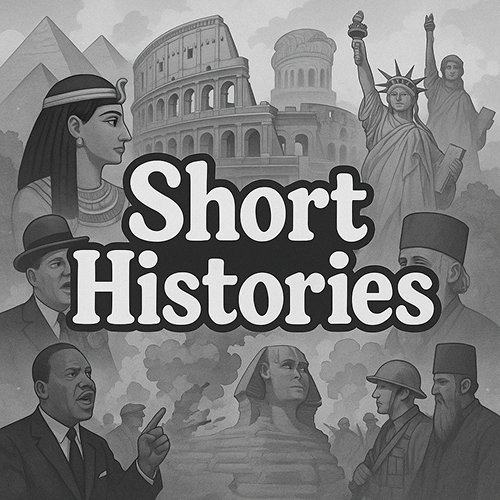Beneath the rolling fields of Flanders, where blood once soaked the trenches, red poppies bloom. Each petal a memory, each bloom a ghost. From Gallipoli to the Somme, from Verdun to Passchendaele, they died not only for their country but for a world they could scarcely understand. Four years of mechanized slaughter had taught humanity a bitter truth: the old world had ended and something colder had taken its place. This is the tale of the Great War, this is WWI.
I. The Powder Keg: A World on Edge
Europe, 1914. It was an age of steel and steam, of pride and paranoia. The great powers strutted across the world stage, carving colonies and building dreadnoughts. But beneath the bravado, Europe was a powder keg of alliances, ambitions and age-old grudges.
The German Empire, young but powerful, hungered for recognition and a place in the sun. Britain ruled the waves, wary of challengers. France, still smarting from its defeat in the Franco-Prussian War, longed for revenge. Austria-Hungary, a decaying empire of many tongues, sought survival through dominance. Russia eyed the Balkans, its Slavic brethren and gateway to the Mediterranean. The Ottoman Empire, the "Sick Man of Europe," clung desperately to its fading glory.
Into this volatile mix stepped Gavrilo Princip, a 19-year-old Bosnian Serb nationalist. On June 28, 1914, in Sarajevo, he assassinated Archduke Franz Ferdinand, heir to the Austro-Hungarian throne. What followed was not a regional crisis but a chain reaction. Austria-Hungary blamed Serbia, Russia backed Serbia while Germany pledged to defend Austria. France mobilized against Germany, Britain was drawn in by treaty and outrage at Belgium's invasion. The Ottoman Empire wanting to play with the new big boys, jumped in behind Austria-Hungary and Germany.
II. The Machines of Death: War Unleashed
The war that followed was unlike anything seen before. It was not glorious or swift, it was rather industrial, brutal, and all-consuming. Trenches stretched from the Swiss Alps to the North Sea. Men lived like rats, ankle-deep in mud, surrounded by lice and the stench of death. Barbed wire, machine guns, and poison gas turned frontal assaults into suicidal charges. Artillery shattered the earth day and night.
In 1916, the Battle of Verdun claimed over 700,000 casualties. The Somme, launched by the British to relieve Verdun, saw 60,000 men fall on the first day alone. Meanwhile, Gallipoli, a failed Allied attempt to knock the Ottomans out, became a symbol of wasted valor, especially for ANZAC troops.
Airplanes, once novelties, became tools of surveillance and death. Zeppelins bombed cities. U-boats prowled the Atlantic, sinking merchant ships. Tanks, then crude and unreliable, rumbled onto the battlefield, changing warfare forever.
III. The Global Inferno
Though born in Europe, World War I technically scorched the entire globe. Africa became a battleground for colonial powers. In the Middle East, Britain stirred Arab revolts with promises of independence, only to break them later. T. E. Lawrence, the enigmatic "Lawrence of Arabia," rode with Bedouin fighters against the Ottomans.
Japan, aligned with the Entente, seized German holdings in Asia. In India, over a million men served the British cause, many believing service would bring freedom back home. From Senegalese Tirailleurs to Indigenous Canadians, empires drew their colonial subjects into a white man's war.
And in 1917, a new player entered the fray: the United States, shocked by German unrestricted submarine warfare and enraged by the Zimmermann Telegram, which proposed a German-Mexican alliance against the U.S. President Woodrow Wilson framed the conflict as a "war to make the world safe for democracy."
IV. Collapse of Empires
By 1917, the strain cracked even the mightiest foundations. Russia, engulfed by revolution, withdrew after the Bolsheviks, led by Lenin, seized power and signed the Treaty of Brest-Litovsk with Germany. The Romanov dynasty was gone and he Russian Civil War had begun.
In Austria-Hungary and the Ottoman Empire, ethnic nationalism splintered the realms. Arab, Czech, Slovak, and Balkan aspirations burned hotter than loyalty to emperors. In Germany, disillusionment and starvation gripped the people. Kaiser Wilhelm II abdicated in November 1918. The armistice was signed on November 11, ending the fighting.
But peace was merely a mirage and temporary. The Treaty of Versailles in 1919 punished Germany was burdened with severe reparations, extensive territorial losses, and national humiliation, creating fertile ground for future resentment. Although President Woodrow Wilson presented his idealistic Fourteen Points as a blueprint for lasting peace, most of them were sidelined during the negotiations. The League of Nations was established in hopes of preventing future conflicts in 1920 but it was weakened from the outset as the United States, its very creator, refused to join, with the Senate rejecting the treaty.
V. The Lost Generation and Legacy of Trauma
The war left over 20 million dead and countless more maimed in body and mind. Shellshock, what we now call PTSD, haunted a generation. Artists and poets like Wilfred Owen, Siegfried Sassoon, and Erich Maria Remarque captured the horror in ink and verse. Europe's faith in progress and civilization was shattered. Monarchies were toppled, ideologies radicalized and the seeds of the next great war were sown in the bitterness of Versailles and the broken economies it left behind.
World War I gave birth to the modern world of aerial warfare, propaganda, total war, and genocide as political tools. It was the war that shook the world and its aftershocks would ripple into every corner of the 20th century.
Next Time: World War II | Inferno of Nations
A war of tanks, tyrants, absolute destruction and unprecedented carnage. The world descended once more into darkness as Hitler's rise, global conquest, and genocide threatened to erase civilization itself.
Please go back to top & scroll gently

